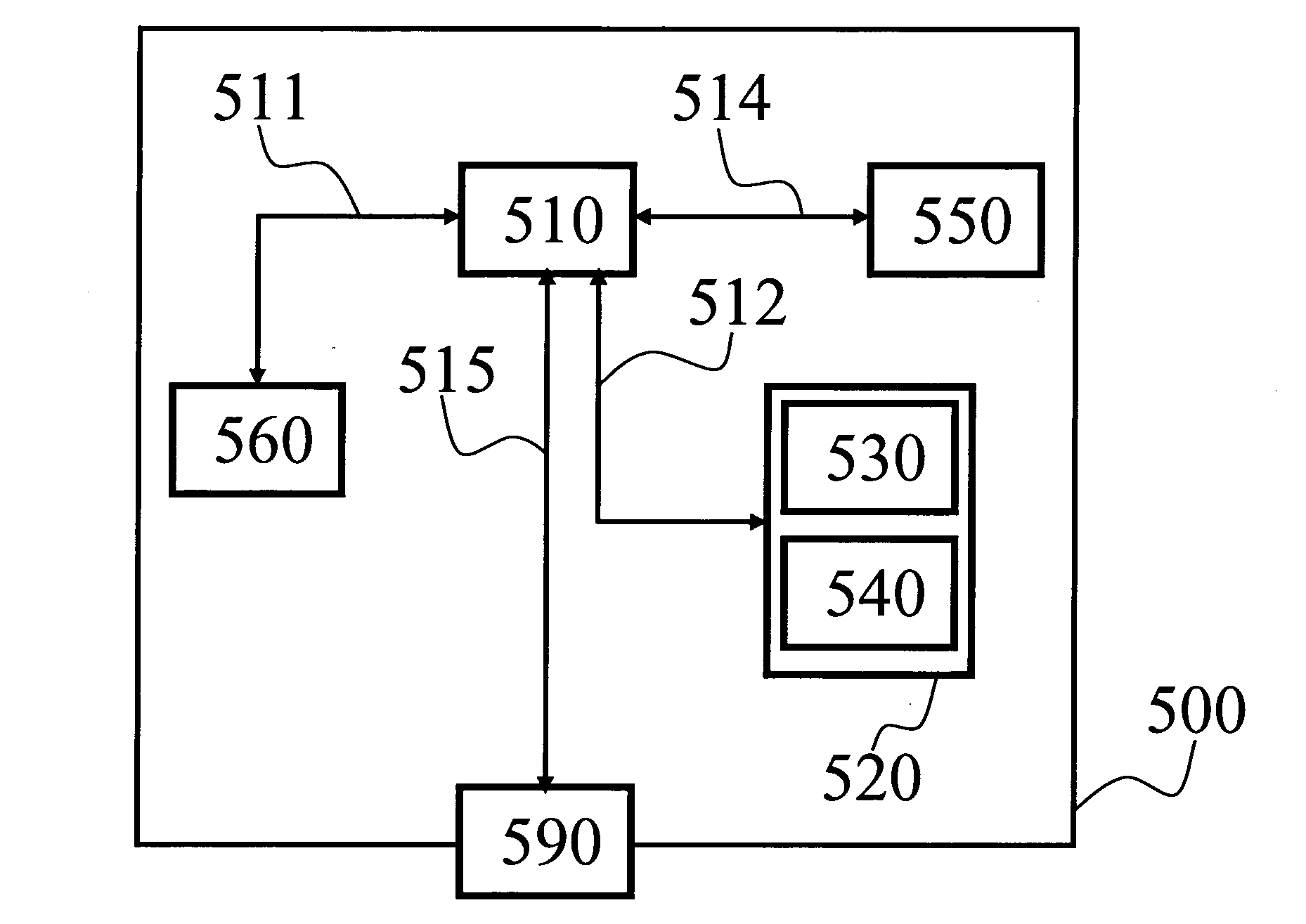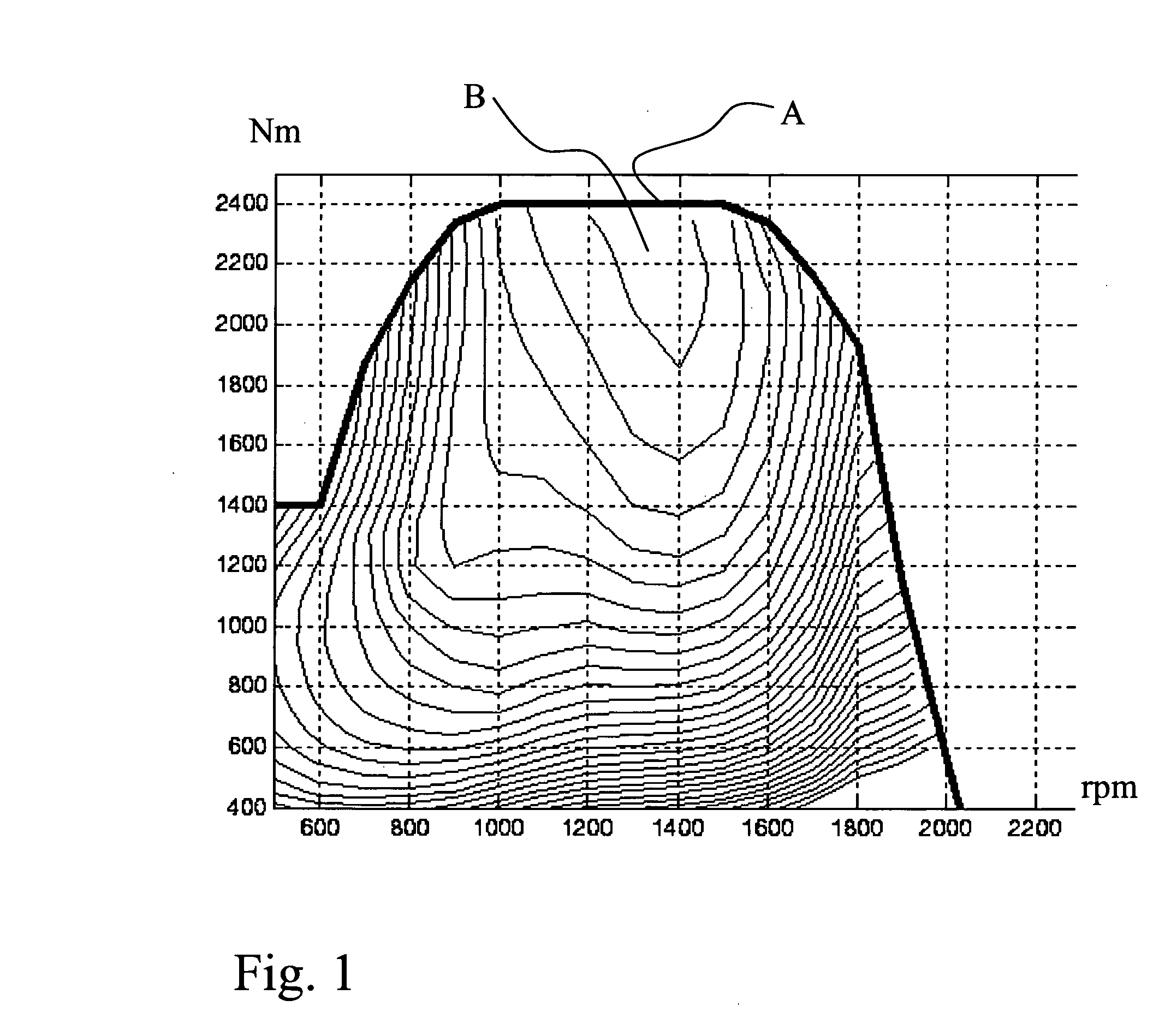Method for a more efficient use of a combustion engine in a vehicle
a combustion engine and vehicle technology, applied in the direction of electric control, speed sensing governors, instruments, etc., can solve the problems of relatively high engine rotational speed, low engine efficiency, and inability to upshift to a new gear, so as to reduce unnecessary driving, save fuel, and reduce the effect of inefficient engine rotational speed
- Summary
- Abstract
- Description
- Claims
- Application Information
AI Technical Summary
Benefits of technology
Problems solved by technology
Method used
Image
Examples
Embodiment Construction
[0020]In one embodiment the vehicle is equipped with an internal combustion engine, an automatic step geared transmission and driven wheels, to which drive power from the engine can be transmitted via different gears in the transmission. The different gears are selected and engaged by a transmission control unit. Each selectable gear has a predetermined gear ratio.
[0021]Gear selections and shift decisions are made by said control unit based on certain measured and / or calculated parameters such as vehicle speed, engine speed, rate of change of vehicle speed, rate of change of engine speed, throttle control position, rate of change of throttle control position, actuation of a vehicle braking system, currently engaged gear ratio and the like are known from prior art.
[0022]In a first preferred embodiment of the invention said control unit is programmed to estimate if a selected, not yet performed upshift is feasible. This estimation is based on a calculation with input parameters such a...
PUM
 Login to View More
Login to View More Abstract
Description
Claims
Application Information
 Login to View More
Login to View More - R&D
- Intellectual Property
- Life Sciences
- Materials
- Tech Scout
- Unparalleled Data Quality
- Higher Quality Content
- 60% Fewer Hallucinations
Browse by: Latest US Patents, China's latest patents, Technical Efficacy Thesaurus, Application Domain, Technology Topic, Popular Technical Reports.
© 2025 PatSnap. All rights reserved.Legal|Privacy policy|Modern Slavery Act Transparency Statement|Sitemap|About US| Contact US: help@patsnap.com



